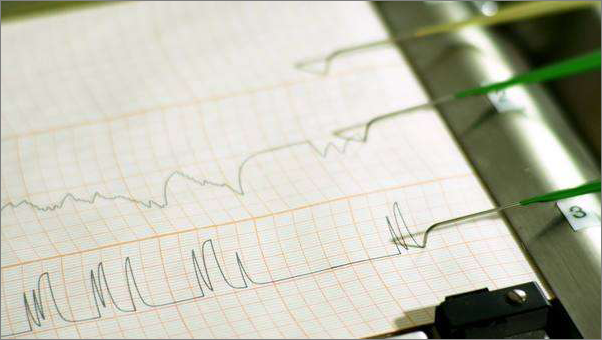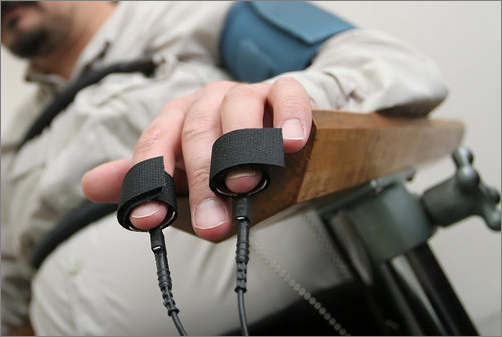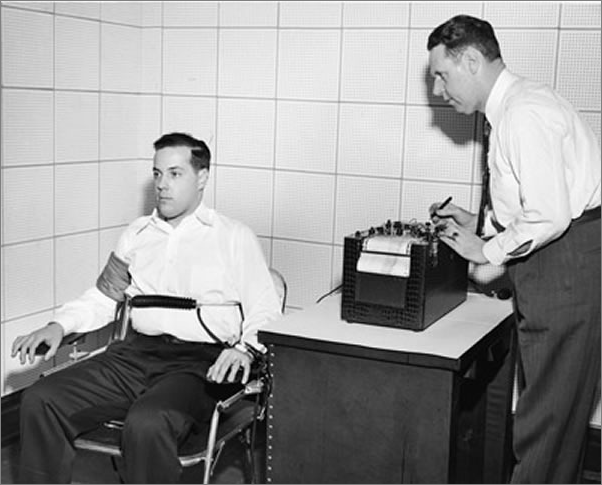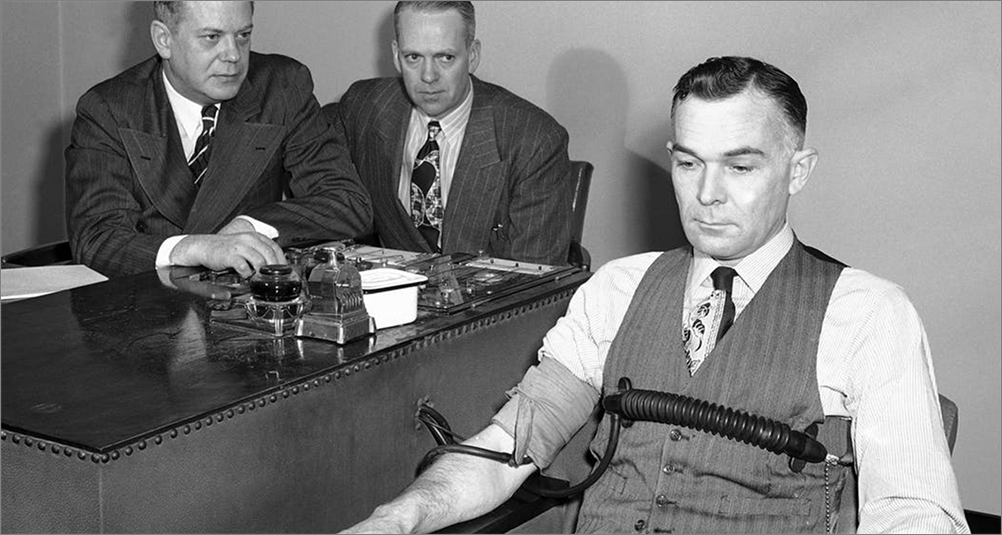Dave McNeill started the polygraph exam by asking John Peel a series of baseline questions about his family and childhood. He also asked Peel whether he was taking the test voluntarily. “I feel it’s something I have to do,” he admitted. Then he laughed nervously. “I hope I do good. I think I should do good.” John Peel was about to take the ride of his life. A rollercoaster ride with no place to buy a ticket and no clear way off the track.
“You know, this is a polygraph,” McNeill instructed. “Okay? And polygraphs only know a lie or the truth. And they don’t differentiate between a little tiny lie and a great big lie. Just a lie is a lie and a truth is a truth.”
“Okay,” Peel agreed.

“All right. Now if you’re involved at all… don’t take it,” warned McNeill. “Okay? Get up and walk out now.”
“Okay,” Peel said, staying put.
“Just walk out,” McNeill repeated. “Okay?”
“Got it.”
“Okay,” McNeill said. “If you set fire to it, the Investor, you know, if you caused that to burn and you burned those kids, burned Mark Coulthurst, Irene, get up and walk out. Okay?”
“Yeah, I understand.”
“If you didn’t do it, were not involved at all, then just stay sitting there.”
“Here I am.”
“But if you did it, leave.”
“Gotcha,” Peel said, refusing to leave.

In a rambling interview that seemed to cover every phase of John Peel’s short life, Detective McNeill laid the groundwork for his most probing questions. This was the part where the ride promised to get really interesting. In the end everything came down to a few responses.
“Did you murder Mark Coulthurst?” McNeill asked after they were deep into the exam.
“No,” Peel replied.
“Do you know for sure who murdered Mark Coulthurst?”
“No,” Peel said.
“You have no idea?”
John Peel shook his head. “No,” he was gesturing. “No.”
“Did you set the fire that burned the Investor?”
“No,” Peel once more replied.
McNeill asked Peel about other times in his life where he may have lied to authorities or caused harm to other people. Peel told him he and a friend had killed a woodpecker with a slingshot when he was a little boy, but felt bad about it because they knew Peel’s dad would be livid.

John Peel’s denials notwithstanding, McNeill wasn’t impressed. His reading of the polygraph charts told him Peel had been “deceptive” during the interview. Peel insisted he’d been telling the truth and wanted a chance to explain. Not only that, but he wanted to take the polygraph examination again. He had been too nervous. Maybe if he took it again tomorrow, he said, he wouldn’t be so nervous. McNeill didn’t know how to answer that one, so he went out and got Galyan and Flothe. Maybe they could respond to Peel’s request. After all, this was their case — their rollercoaster ride — wasn’t it?
When Daryl Galyan entered the polygraph room, he was less than receptive to Peel’s request for a second polygraph exam. He’d looked at the charts, he told Peel. He hadn’t seen anything that would cause him to think the results would change. There wouldn’t be a second ride. “You lied on the polygraph,” Galyan insisted, taking a seat next to Peel. “I can take those charts to any polygraphist, even a first-week student, John, and I can lay those on a table. All right?”
Peel mumbled a complaint under his breath. “I’m sorry, I didn’t hear that,” Galyan said, stopping himself short.
“I said, ‘Well, the machine can’t work that well then, because I wasn’t lying.”‘
“Well, I hate to pop your little bubble, John,” Galyan said, leaning closer, “but the polygraph does work. There are places in there that you are truthful. It shows that there are places in there that you are not truthful, and it shows that. The instrument is one of the best polygraphs that you can buy. John, there’s no question in my mind that you did this thing. The question that I have in my mind is: are you sorry that you got involved?”
“So you’re expecting me to say I’m sorry for something I didn’t do?” Peel asked.
“All I’m doing is talking to you,” Galyan insisted. “All I’m doing is telling you exactly where I’m coming from and exactly why John, there’s no doubt about it, that you did this.”
“Oh, my God,” Peel said, the bravado gone.
”The only question is ‘Why?’ And we’re right back to the same issue here. Okay?”
“No. I think it’s about time I got a lawyer, if… if there’s no doubt in your mind.”

“John, I’ve looked at the charts,” Galyan said. “You are a textbook reactor. I haven’t seen somebody that’s a reactor like you in a long, long time. In the trade, there’s what is known as an emotionally-low responder. Basically all that means is that when a person tells a lie, they write out that they’re lying, but they do it very subtly. Okay? You are absolutely not an emotionally-low responder. You’re a textbook reactor.”
“I’ve looked at the charts, John,” Galyan repeated. “and you’re not telling the truth.”
“That’s what the chart says?” Peel asked.
“Absolutely.” Galyan told him that he did not even have to be an expert to know which questions he was answering with lies. “John, it’s nothing personal, but I came down here because I want to help resolve this and one of the things that I want you to understand is that you’re a pretty decent young man from everything I’ve learned about you.”
“Right,” Peel said.
“I foresee this whole thing coming to a conclusion very quickly,” Galyan said.
“You do?” Peel asked.
“You lied on the polygraph. I can take those charts to any polygraphist, even a first-week student, John, and I can lay those on a table. You didn’t tell the truth in there.”
“Well,” Peel said, “the machine can’t work that well then, because I wasn’t lying.”

After an extended back and forth, which had John Peel pleading for the troopers to believe his proclamations of innocence, Peel let his exhaustion show.
“Whew,” was all he could say, letting out a deep sigh. “I just can’t believe this. You people are wrong.”
“Is there anything that you want us to do?” Flothe asked. “It’s up to you. Now, we’re the police, right?”
”Well, okay. Well, wait a day,” the fisherman told them. “I’ll try it again tomorrow, you know, because I’m too tense. After all, that gives me a day to think about it…”
“That sort of thing doesn’t make me any difference, John,” Galyan insisted. “The only time that a re-exam does any good is when it would lead to a psychological reason, you’ve got a mental case in there.”
“Maybe I do have a mental case,” Peel offered.
“Maybe you do, I don’t know. Okay? All you want to do is just jump up and down and say that you talked to me.”
“Well, if you were in my shoes — innocent — what would you do?” Peel’s question had a bit of everything in it: part pleading, part fear, part anxiety.
“If I was in your shoes and I was innocent, I wouldn’t be here, John,” Galyan declared. “But I’m not in your shoes and you’re not innocent. That’s the problem that I’m faced with here. I took a week out to come down here…”
“You’re in your — in my shoes and innocent, you wouldn’t be here now?” Peel asked, incredulous.
“That’s right.”
“See you later,” Peel declared.
“Auf Wiedersehen,” Galyan replied, “Thanks for coming in, John.”
As Peel made his way out of the office, Sgt. Stogsdill — who was still watching the interrogation from behind the one-way glass — overheard him say: “I understand now what you want is a confession.”
Troopers believed that’s exactly what they had. They thought the ride was over. But the ride was just beginning.
Excerpts from the unpublished original manuscript, “Sailor Take Warning,” by Leland E. Hale. That manuscript, started in 1992 and based on court records from the Alaska State Archive, served as the basis for “What Happened in Craig.”
Copyright Leland E. Hale (2019). All rights reserved.

Order “What Happened In Craig,” HERE and HERE. True crime from Epicenter Press about Alaska’s Worst Unsolved Mass Murder.